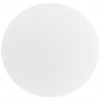 Buy Polyethersulfone Membranes on line and save but first be informed so you make the right purchase. Sterile filtration devices, such as vacuum cups and syringe filters, are used throughout the life science research laboratory for a variety of routine yet critical applications. Among these are the clarification of biological samples and the sterilization of tissue culture media, additives and buffers. These membrane devices are available with a number of different membranes, but in recent years there has been substantial growth in the use of polyethersulfone(PES). These membranes are unique in their combination of fast flow, high throughput, and low protein binding. This article describes the development of a new-generation PES membrane providing flow rates that are higher still. This discussion will also compare the flow rates and protein binding performance of this new membrane to those of others in applications such as tissue culture media filtration.
Buy Polyethersulfone Membranes on line and save but first be informed so you make the right purchase. Sterile filtration devices, such as vacuum cups and syringe filters, are used throughout the life science research laboratory for a variety of routine yet critical applications. Among these are the clarification of biological samples and the sterilization of tissue culture media, additives and buffers. These membrane devices are available with a number of different membranes, but in recent years there has been substantial growth in the use of polyethersulfone(PES). These membranes are unique in their combination of fast flow, high throughput, and low protein binding. This article describes the development of a new-generation PES membrane providing flow rates that are higher still. This discussion will also compare the flow rates and protein binding performance of this new membrane to those of others in applications such as tissue culture media filtration.
Tissue culture techniques are ubiquitous throughout life science research. Life-science professionals, including cancer researchers, virologists, immunologists, cell biologists, and pathologists, to name a few, cultivate animal cells or microbes in vitro. Their objectives are to study cell morphology, growth, and regulation in normal and disease states, or to understand the effects that environmental stresses (such as drugs and toxins) can have on cells. In addition, scientists grow cells in order to harvest cell contents or by-products, such as monoclonal antibodies, enzymes, or the viral components used in vaccine production. This harvesting application has evolved from research scale applications, to form the basis for the biotechnology industry, which produces commercial quantities of therapeutic compounds by means of tissue culture.
Cell Culture Requirements

polyethersulfone membrane
To allow cells to grow properly, the researcher must create an environment in vitro that simulates the conditions that cells normally encounter in vivo. This requirement includes maintaining the proper temperatures and pH levels, as well as the appropriate concentrations of key dissolved gases such as oxygen and carbon dioxide. Culture media represent a critical component that provides not only the nutrients on which the cells feed, but also their physical environments (usually liquid). Additives (such as growth factors, hormones, antibiotics, and vitamins) are used to further refine the growth conditions, supplement the nutrients, and prevent the growth of microbiological contamination. The sterility of the growth media is vital to ensure that microbial contamination does not adversely affect the growth of the target cells or compromise their optimal environments. Given the time- and labor-intensiveness of the cell culture process, many researchers believe that the insurance provided by sterile filtration (even for pre-sterilized media) is well worth the cost.
Culture media can be formulated by the users in the lab or purchased, being commercially available in several forms including sterile ready-to-use liquids, liquid concentrates, and powders. These media can be complex, often containing proteins, antibiotics, and other components. Serum (usually bovine or fetal calf-derived) is a proteinaceous, blood-based solution found in many mammalian cell culture media. Some proteins and other key ingredients found in media are heat-sensitive. Consequently, sterilization by autoclave is not an option. Sterilization by 0.22 μm membrane filtration has become an important part of media preparation, ensuring the sterility of the media while preserving the activity of key ingredients. In addition to being certified to remove bacteria, these filtration devices must be non-cytotoxic, and non-pyrogenic .
Membranes and devices made with 0.22 μm cellulosic materials (such as cellulose nitrate, cellulose acetate, and mixed esters) were the first to be used in these applications, and are still in use today. However, these membrane materials have three principal drawbacks: low flow rates, low throughput (the volume of fluid that can permeate a filter before it clogs), and high protein binding. Other membrane materials were later tried which could solve some but not all of these problems. Nylon provides higher flow than cellulosic media but is also highly binding. Polyvinylidene difluoride (PVDF) has low protein binding but has lower flow rates than cellulosics. PES was the first polymer type to offer the desired combination of a high flow rate, high throughput, and low protein binding.
PES Membrane Development
When surveyed, tissue-culture scientists and technicians reported that filtration speed, throughput, and price are the most important criteria used to decide whether to switch brands of sterile filtration devices.
Summary
PES membranes have dramatically improved the productivity and speed of sterilization by filtration in the life sciences laboratory, particularly for protein-containing or other difficult-to-filter solutions. The features of high flow rate and throughput, combined with low protein binding, offer a convenient, economical, and high-quality way to ensure the sterility of media, buffers and additives in critically important mammalian and microbial cell culture applications
